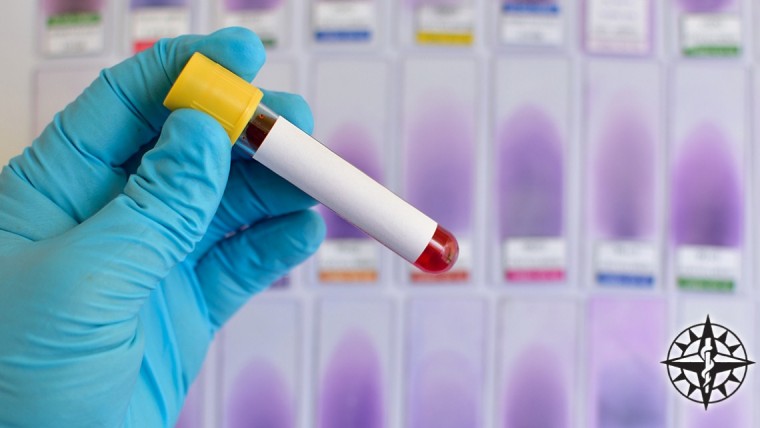Published on: August 14, 2023
A closer look at Vibrio Vulnificus.
Vibrio Vulnificus is a type of bacteria that can cause serious illness in people who consume contaminated seafood or have an open wound exposed to saltwater. This bacterium is commonly found in warm coastal waters, particularly in the Gulf of Mexico. It can significantly threaten human health, especially during the summer months.
Vibrio Vulnificus & Wound Infections
When this waterborne bacterium enters the body through open wounds that come into contact with contaminated water, Vibrio vulnificus can cause life-threatening wound infections. Some Floridians (and people in general with this infection) with Vibrio vulnificus infection require either intensive care and/or limb amputations. Shockingly, about 1 in 5 people with this rare infection die – sometimes as quickly as within two days of becoming ill. Why so severe? These types of Vibrio vulnificus infections can lead to necrotizing fasciitis, a severe infection in which the flesh around an open wound dies. Necrotizing fasciitis is a rare bacterial infection that spreads very quickly in the body and can cause death. This severe infection is where the “flesh-eating bacteria” moniker the media loves so much comes into play.
Vibrio vulnificus is not the only type of bacterium that causes necrotizing fasciitis. To learn more about this flesh-eating infection, look at this video below from Tiny Medicine:
Florida, Hurricanes & Vibrio Vulnificus
Hurricane Ian hit Florida on September 28th, 2022, as a Category 4 hurricane, causing widespread flooding across the state. By November 1, 2022, 130 hurricane-related deaths had been reported. Long after the storm passed, the floodwaters remained. And interestingly, the hurricane also resulted in a significant increase in cases of Vibrio vulnificus infections. 66 reported cases and 13 deaths were reported as of November 4th, 2022. These cases and deaths were primarily concentrated in Lee County, where the hurricane devastation was at its worst. The increased risk of waterborne infection is typically expected to rise due to flooding and infrastructure damage caused by hurricanes, as noted by GlobalData epidemiologists. The aftermath of Hurricane Ian marks the highest burden of Vibrio vulnificus infections in Florida since 2008.
Years ago, Vibrio Vulnificus was at the center of many non-hurricane related news articles and news videos in Tampa Bay when residents became infected by the bacteria in local waters. WFLA News Channel 8 in Tampa Bay went as far as to track down local and state officials to question them on why they were not posting warning signs about the bacteria near local beaches. You can watch some of the story below:
Whether due to bacteria in floodwaters, local beaches or undercooked shellfish, there is no question that Vibrio Vulnificus is incredibly serious and should be of great concern to Florida residents.
What are the Symptoms of Vibrio Vulnificus?
Symptoms of Vibrio Vulnificus infection can range from mild to severe, including stomach pain, vomiting, diarrhea, and fever. In extreme cases, the bacteria can enter the bloodstream and cause septicemia, a potentially life-threatening condition. Septicemia is the clinical / official name for blood poisoning in a human being by bacteria. Indeed, sepsis is the human body’s most extreme reaction to an infection. Unfortunately, sepsis that progresses all the way to septic shock has a death rate of approximately 50%. Consequently, sepsis is viewed by healthcare professionals as a medical emergency that requires urgent / immediate medical attention.
Who is More Likely to Contract Vibrio Vulnificus?
People with weakened immune systems, such as liver disease or other chronic illnesses, are at a higher risk of developing severe symptoms and complications from a Vibrio vulnificus infection.
Consuming raw or undercooked shellfish, such as oysters, clams, and mussels is one of the most common ways for people to contract Vibrio vulnificus. To reduce the risk of infection, always cook seafood thoroughly and avoid exposure to open wounds to saltwater.
How to reduce the risk of Vibrio Vulnificus
In addition to cooking seafood properly, there are several other steps that people can take to reduce their risk of Vibrio vulnificus infection:
- Wear protective clothing and footwear when participating in water activities, such as fishing or boating, to prevent cuts and scrapes.
- Clean and cover any cuts or wounds with a waterproof bandage before entering the water.
- Avoid swimming in areas with high levels of bacteria, such as those with noticeable pollution or areas with a lot of wildlife.
- Avoid consuming raw or undercooked shellfish.
- Be mindful of any symptoms that develop after consuming seafood or having an open wound exposed to saltwater and seek medical attention promptly if symptoms worsen.
Treatment and Prevention of Vibrio Vulnificus Infections
If you suspect you may have a Vibrio Vulnificus infection, it is vital to seek medical attention immediately. Prompt treatment with antibiotics can be effective in treating the infection and reducing the risk of serious complications. In severe cases, hospitalization is necessary to provide supportive care, such as intravenous antibiotics, fluid therapy, and wound care.
In addition to seeking prompt medical treatment, several steps can be taken to prevent Vibrio Vulnificus infections:
- Practice good hygiene: Wash your hands frequently and thoroughly, especially after handling raw seafood or coming into contact with saltwater.
- Cook seafood properly: Cook shellfish, such as oysters, clams, and mussels, until their internal temperature reaches 145°F (63°C) for at least 15 seconds. Avoid consuming raw or undercooked seafood.
- Be mindful of water safety: Wear protective clothing and footwear when participating in water activities, such as fishing or boating, to prevent cuts and scrapes. Clean and cover any cuts or wounds with a waterproof bandage before entering the water.
- Avoid swimming in areas with high levels of bacteria: Avoid swimming in areas with noticeable pollution or areas with a lot of wildlife, as these areas may have high levels of bacteria.
- Seek prompt medical attention: If you experience symptoms of Vibrio Vulnificus infection, such as stomach pain, vomiting, diarrhea, or fever, seek medical attention as soon as possible.
In conclusion, Vibrio Vulnificus is a dangerous bacterium that can cause serious illness in people who consume contaminated seafood or have an open wound exposed to saltwater. To reduce the risk of infection, cook seafood properly, avoid exposing open wounds to salt water, and take other precautions to protect oneself when participating in water activities. If you suspect that you may have a Vibrio Vulnificus infection, seek medical attention promptly for the best possible outcome.
About IDATB
Based in Tampa, FL, Infectious Disease Associates of Tampa Bay (IDATB) provides high-quality healthcare services for patients in the Tampa Bay metro area. With over 30 years of experience treating infectious diseases, IDATB is ready to serve you. Please call us at 813-251-8444 to schedule an appointment or consultation.





